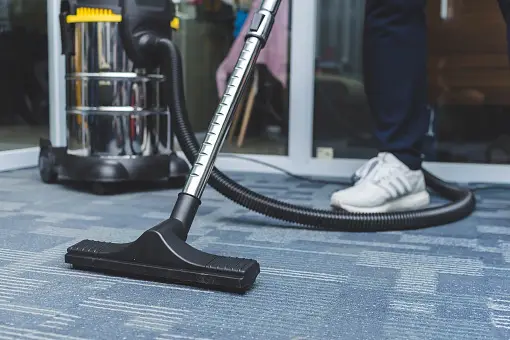Dyson has established a reputation for creativity, effectiveness, and cutting-edge technology when it comes to vacuum cleaners. But what exactly sets Dyson vacuum technology apart from the rest?
In this investigation of the science underlying Dyson’s discoveries, we delve into the ideas and inventions that have made Dyson vacuums the industry benchmark for cleanliness in homes all around the world.
Table of Contents
Unveiling Cyclone Technology: Cyclonic Suction Power
The cyclone mechanism at the basis of Dyson’s cleaning prowess completely altered how vacuums work. Traditional vacuums rely on a single filter to capture dirt and dust, which can quickly clog and diminish suction power.
With the help of several cyclones, Dyson’s cyclone technology creates a strong vortex that separates dust from the air. This ensures effective cleaning of all surfaces by generating prolonged suction power and avoiding blockages.
The Role of Centrifugal Force: Capturing Particles Large and Small
Central to Dyson’s cyclone technology is the principle of centrifugal force. As air and debris are drawn into the cyclone chamber, they’re subjected to rapid circular motion. Heavier particles are thrown to the sides and collected in the dirt container, while lighter particles continue on to be filtered out by the machine’s advanced filtration system.
Due to their unique design, Dyson vacuums can efficiently collect anything from minuscule allergens to big pieces of trash.
HEPA Filtration: Elevating Indoor Air Quality
Beyond just removing obvious dirt, Dyson is dedicated to pure air. High-Efficiency Particulate Air (HEPA) filters are integrated into many Dyson vacuum models, capturing particles as small as 0.3 microns in size – including pollen, dust mites, and pet dander.
In addition to ensuring cleaner surfaces, this level of filtration also improves indoor air quality, which makes Dyson vacuums particularly appealing to allergy sufferers.
Root Cyclone vs. Radial Root Cyclone: Advancing Suction Efficiency
Dyson’s pursuit of perfection didn’t stop at the introduction of cyclone technology. Later, the business created the Root Cyclone technology, which keeps up a powerful suction even while the soil container fills.
By streamlining the airflow route, reducing turbulence, and improving the separation of particles from the air, the Radial Root Cyclone expanded on this idea. With this innovation, cleaning effectiveness was increased overall in addition to continuous suction.
Ball Technology: A Leap in Maneuverability
Dyson’s engineers addressed another aspect of cleaning – maneuverability – with their innovative Ball Technology. Traditional vacuums with fixed wheels can be cumbersome to steer, especially around furniture.
Dyson’s Ball Technology replaced conventional wheels with a large ball that enables smooth and agile movement in all directions. This design not only improves usability but also allows for easy access to tight spaces.
Digital Motors: Compact, Powerful, and Energy-Efficient
Dyson’s commitment to innovation extends to the heart of its vacuums – the motor. Traditional vacuum motors are bulky and heavy, which limits maneuverability and efficiency. Dyson’s digital motors, on the other hand, are compact, lightweight, and powerful.
These high-speed, energy-efficient motors are at the core of Dyson’s cordless handstick vacuum designs, providing sustained suction without the bulk.
Battery Lifespan:
The duration a Dyson vacuum’s battery will last is influenced significantly by factors such as the vacuum model, cleaning mode, and usage patterns. Generally, a Dyson battery can provide a runtime of anywhere from 20 to 60 minutes when fully charged, and this duration varies based on the specific model and the level of suction strength selected. Shorter runtimes usually occur when the vacuum is set to higher suction power, which consumes more battery power.
Beyond its cleaning prowess, Dyson vacuums also excel in their ability to navigate complex environments. Dyson’s vacuum robots and some upright models are equipped with advanced sensors and navigation systems that allow them to intelligently map and clean a space.
These technologies help the vacuum detect obstacles, avoid collisions, and effectively cover the entire area.
Automated Cleaning: Robotic Revolution
Dyson’s foray into robotic vacuum cleaners marked a new era in automated cleaning. These intelligent devices are equipped with sensors that detect obstacles, cliffs, and even changes in flooring i.e., tiles flooring, hardwood or carpet cleaning, etc.
They navigate rooms systematically, ensuring thorough coverage. Through continuous learning algorithms, these robots adapt to the environment, making them efficient and reliable cleaning companions.
Materials and Design Innovation: Form Meets Function
Dyson’s commitment to design innovation goes beyond the functional aspects of vacuuming. The company is known for its sleek and futuristic design aesthetic, making its vacuums not only efficient tools but also stylish additions to homes.
Dyson’s engineers and designers meticulously select materials that are both durable and visually appealing, blending form and function seamlessly.
Constant Innovation: Pushing Boundaries
What truly sets Dyson apart is its unrelenting commitment to pushing the boundaries of innovation. The company’s research and development teams continue to explore new avenues, seeking to enhance performance, efficiency, and user experience.
This dedication to innovation ensures that Dyson vacuums remain at the forefront of technology and cleaning capabilities.
User-Centric Approach: Enhancing Convenience
Dyson’s technology isn’t just impressive on a technical level; it’s also designed with the user in mind. From cordless models that offer unrestricted movement to quick-release mechanisms for easy maintenance, Dyson considers the practical aspects of cleaning routines.
The goal is to make cleaning as efficient and hassle-free as possible, while still delivering exceptional results.
The Impact on Modern Living: Elevating Cleanliness
Dyson’s vacuum technology isn’t just about cleaning floors; it’s about enhancing the quality of life. By providing tools that effectively remove allergens, dust, and dirt, Dyson contributes to healthier indoor environments. Its innovations also give users more time to focus on other aspects of life, making everyday tasks more manageable.
Conclusion
In conclusion, Dyson’s vacuum technology isn’t just about cleaning; it’s a marriage of science and innovation. Through cyclone technology, advanced filtration, and ingenious engineering solutions, Dyson has redefined the standard for cleanliness.
From capturing microscopic allergens to enhancing maneuverability, every Dyson vacuum showcases the brand’s commitment to pushing the boundaries of what’s possible in home cleaning.
